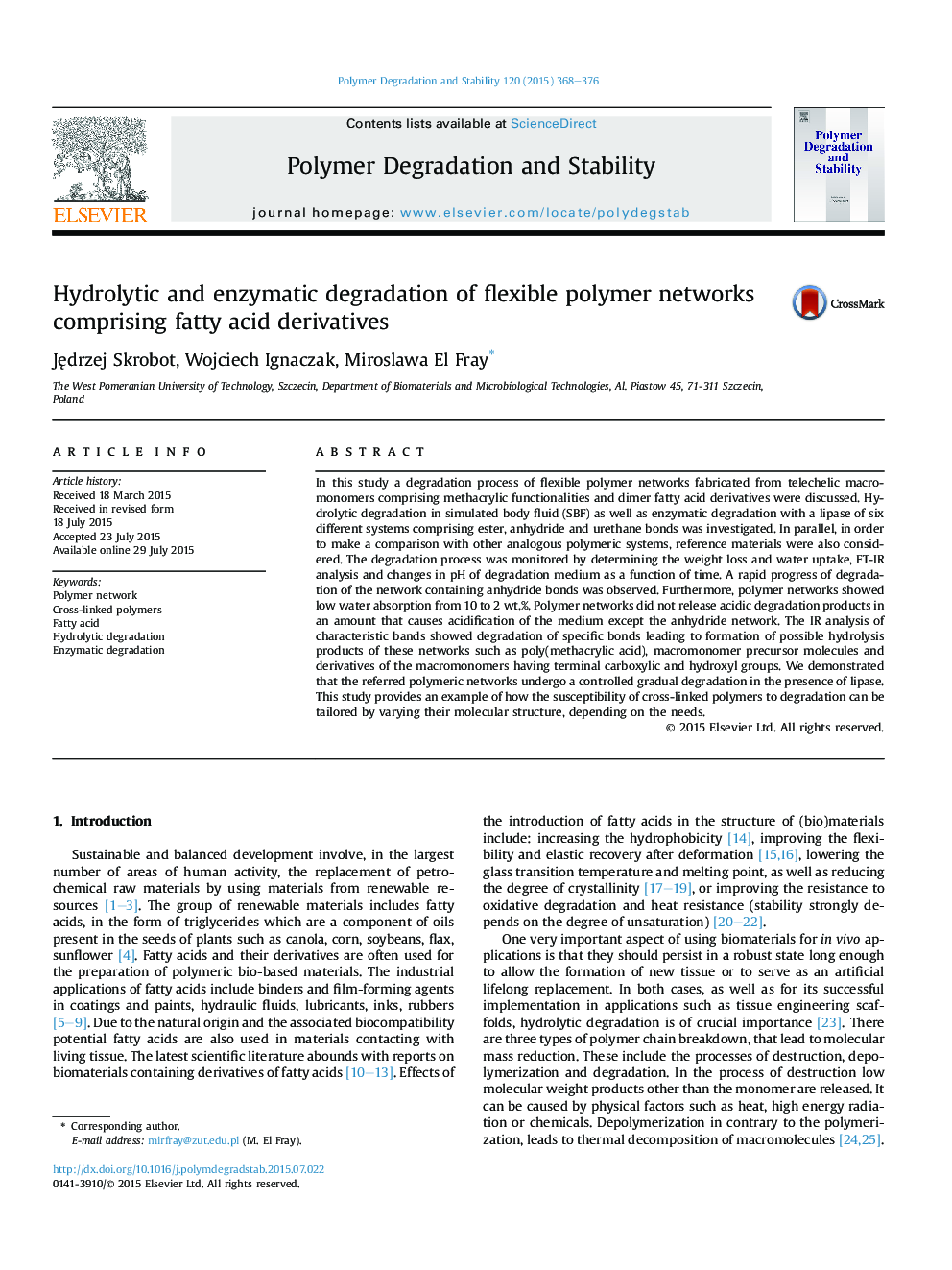| Article ID | Journal | Published Year | Pages | File Type |
|---|---|---|---|---|
| 5201320 | Polymer Degradation and Stability | 2015 | 9 Pages |
Abstract
In this study a degradation process of flexible polymer networks fabricated from telechelic macromonomers comprising methacrylic functionalities and dimer fatty acid derivatives were discussed. Hydrolytic degradation in simulated body fluid (SBF) as well as enzymatic degradation with a lipase of six different systems comprising ester, anhydride and urethane bonds was investigated. In parallel, in order to make a comparison with other analogous polymeric systems, reference materials were also considered. The degradation process was monitored by determining the weight loss and water uptake, FT-IR analysis and changes in pH of degradation medium as a function of time. A rapid progress of degradation of the network containing anhydride bonds was observed. Furthermore, polymer networks showed low water absorption from 10 to 2Â wt.%. Polymer networks did not release acidic degradation products in an amount that causes acidification of the medium except the anhydride network. The IR analysis of characteristic bands showed degradation of specific bonds leading to formation of possible hydrolysis products of these networks such as poly(methacrylic acid), macromonomer precursor molecules and derivatives of the macromonomers having terminal carboxylic and hydroxyl groups. We demonstrated that the referred polymeric networks undergo a controlled gradual degradation in the presence of lipase. This study provides an example of how the susceptibility of cross-linked polymers to degradation can be tailored by varying their molecular structure, depending on the needs.
Related Topics
Physical Sciences and Engineering
Chemistry
Organic Chemistry
Authors
JÄdrzej Skrobot, Wojciech Ignaczak, Miroslawa El Fray,
